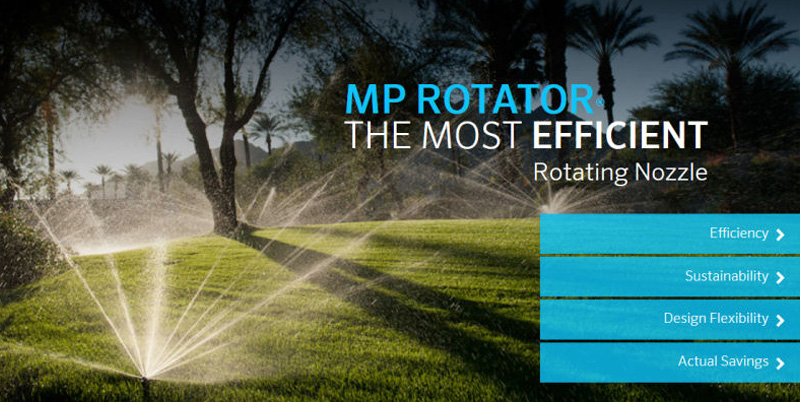
Lawn Care Made Easy: Your Questions Answered
So, you want to make your lawn care easy and low maintenance, the best thing to do is rip it out and plant a native garden instead. Just kidding! Well maybe only halfway… On a more serious note, lawns are fantastic and functional for the right people in the right situation. Say you have kids who need a comfortable flat space to play in or practice sports, or you have pets that need a space to run around without getting covered in mulch or damaging the rest of your landscape. Or perhaps you’re just seeking that quintessential lush green area to lay out the chairs or blanket for a backyard picnic or to read a book. Regardless of the reason, we’re experts in lawn care despite our comic (and serious) aversion to them in some cases.
If you’re searching for backyard designers near me in Healdsburg, consider reaching out to our team for creative and sustainable landscaping solutions.
Enhancing Your Lawn with Advanced Irrigation
Ah, the age-old question! “How do I keep my lawn green, lush, and free of weeds?” It all starts with proper irrigation. If your lawn has an irrigation system that is over 5 years old, it almost certainly isn’t benefiting from the most up to date sprinkler nozzle technology known as the ‘stream rotor’. There are sprinkler heads that slowly spin, applying streams of water at a much slower and more efficient rate than traditional pop up spray or rotor nozzles. This allows the ground to absorb all the water you apply to it rather than have it pool up and run off because it is applied too far. The streams are also less affected by wind which reduces overspray and ensures each bit of your lawn gets the water it needs. Our favorite type of sprinkler nozzle for lawns is the Hunter MP-Rotator nozzle which comes in a wide range of radius distances thrown (approx. 5ft – 30 ft) and in adjustable radius arcs so that you can fine tune it to the shape of your lawn.
Maintaining Sprinkler Alignment and Avoiding Water Waste
How your sprinklers are tuned is also paramount, for example if your sprinkler head gets knocked by a mower, it could turn the head so that it isn’t even spraying in the right direction. Be sure to regularly turn your sprinklers on and check that they are properly aligned. A related issue is if your sprinkler is tilted to the side or at an angle when it pops up. If your sprinkler head isn’t oriented properly to the soil grade around it, then on one side it will be spraying down toward the ground, and the other side up to the sky. Even a small amount of lean on a sprinkler head can lead to dry spots that are hard to identify without the critical eye to check for proper orientation of the sprinkler head.
Programming for Optimal Irrigation
Programming your irrigation timer appropriately is also a major factor in the health of your lawn. Many folks assume that just one long run time a day will do the trick, however this could either be way too much, or way too little depending on a few different factors such as soil type and sprinkler type. If you have sandy soil you might need to irrigate a bit more frequently as water quickly drains through it, if you have clay soil then water absorbs slowly which means a longer run time on your controller will lead to water running off the sides and no actually ending up on your lawn or even absorbing into the soil.

Smart Watering Practices to Prevent Runoff
Understanding how much water is being applied, and how quickly your soil absorbs it is key. A good test is to turn your sprinklers on, and time how long it takes until you see water pooling on the surface of the soil. Your run time should never exceed the amount of time it takes for this pooling of water to occur. Usually this is around 7-13 minutes when using MP Rotator nozzles, but with pop up spray that could be 3-5 minutes, with Rotors that could be 12-30 minutes. Run off will likely happen well before you’ve applied enough water for your lawn to stay fully hydrated, but continuing to apply water at this time won’t help. You need to let the soil absorb the water and increase its holding capacity before you apply water. Usually this takes about 60 minutes.
Generally we recommend about 120 minutes per station per week in the peak of the summer when using MP rotators. If your soil starts to have water run off after 10 minutes, that would mean you need to divide up the run times into multiple start times and multiple days. We recommend programming about 3-4 days of irrigation for lawns per week in the summer. We also recommend watering in the early morning to reduce evaporation and take advantage of the time of day when there is typically the least amount of wind. If you were trying for a total of 120 minutes per week, in 4 days per week, we would recommend 3 start times for each day, with a run time of 10 minutes. This could look like start time at 4am, 5am, and 6am, for a run time of 10 minutes, on Monday, Wednesday, Friday, and Sunday. Try to schedule your sprinklers not to run on the same day you mow, this will prevent you from compacting the lawn and leaving ruts while mowing.

Fertilization for a Healthy, Green Lawn
Turf Grass, the grass that most lawns consist of, has an above average need for fertilizer, and in particular nitrogen which is what makes plants, and lawns, green. This is both because lawns are cut frequently promoting rapid growth that is constantly being resprouted, but also because nitrogen is highly water soluble so the increased frequency of irrigation required to keep a lawn healthy results in the nitrogen being washed out of the tops soil. As a regenerative landscape company we always recommend that you use organic fertilizers in every application, and even better use compost. To many people’s surprise, cutting a lawn extra low, then applying a 1’’ layer of compost is an incredible way to rejuvenate a lawn. However if you choose granulated fertilizer make sure it’s organic certified, OMRI ratings are best. Lawns require fertilization about 3 times a year to ensure they stay green. In our maintenance program we fertilize in March when temperatures begin to rise, in June before summer heat really sets in, and in late September/early October as temperatures begin to drop again. It’s key to fertilize before fall sets in because once the cool weather takes over, your lawn won’t change much until spring. If you haven’t achieved that lush green look, you’re probably stuck until spring. Staying on top of fertilization is almost, if not just as, important as an efficient and well tuned irrigation system.
Despite their popularity, keeping a perfectly green and lush lawn is a science with many ways to go about achieving your dream of the idyllic lawn. However the fundamentals of irrigation and fertilization will get you well on your way. Aside from that, regular weekly mowing during the summer, every other week mowing in the winter, and regular weed control will almost certainly guarantee the grass is greener on your side of the fence.
Ready to transform your lawn? Call us today at (707) 395-7474 to schedule your free consultation and discover how we can enhance your outdoor space!





